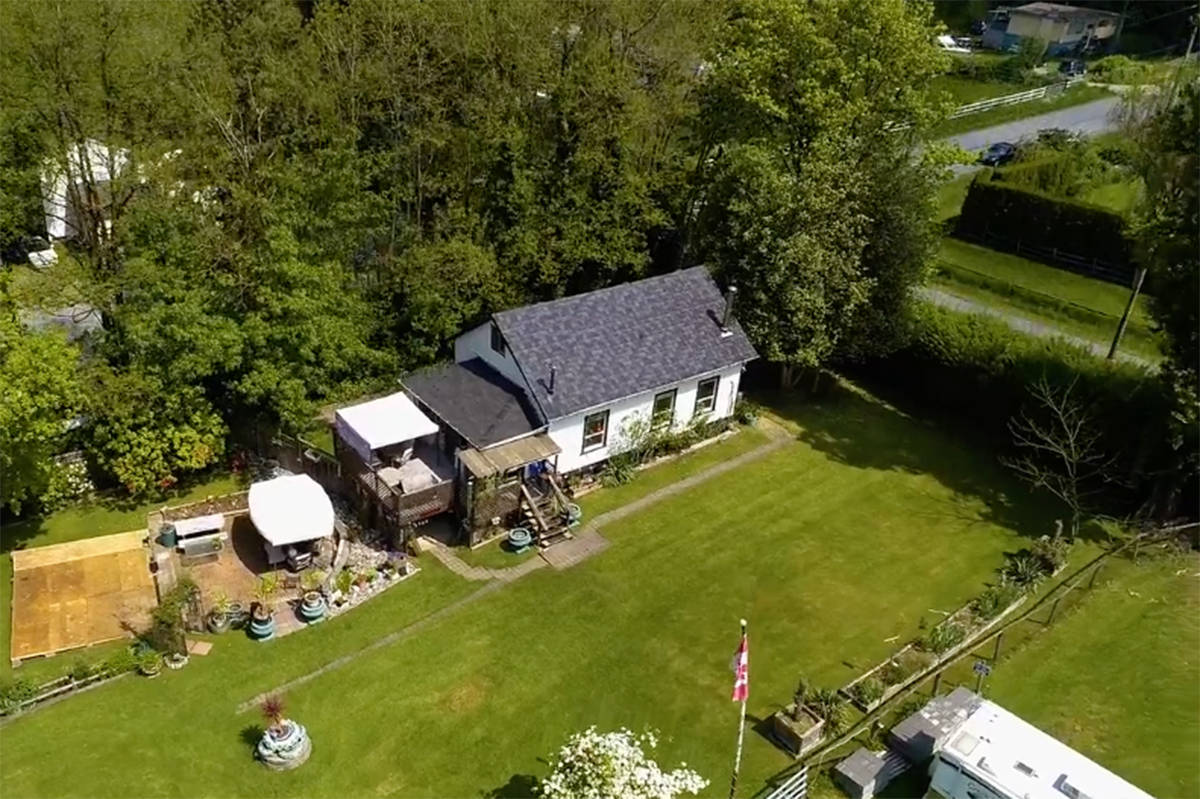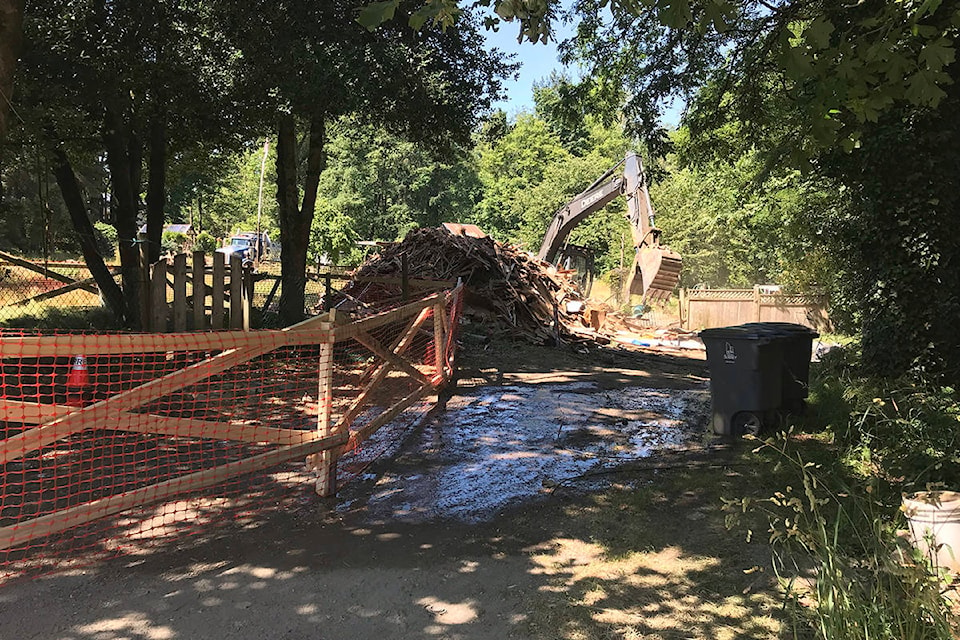A piece of Cloverdale history was quietly demolished this week.
Located in a corner of Surrey once known as the “wildwood,” the small, unassuming building at 7791 192 Street had been used as a private residence for decades. It was torn down on Wednesday (June 26), to make room for new development.
Although long forgotten, the building was once a cornerstone for a small but faithful congregation that formed in the sparsely populated, isolated area where dirt roads often became impassable in times of rain or snow.
A group of neighbours banded together to worship shortly after the First World War, and met for years in the home of Reverend Graham, a man who had been born a slave in the United States. Services for adults were held in the front of his home, accompanied by hymns played on a small organ. In the back of the house, Sunday School was hosted for the children.
| The Watanabe family donated the land for the church to be built in the early 1920s. Echoes Through A Century / City of Surrey Archives |
In the early 1920s, Japanese immigrants Takiyo and Tomoyoshi Watanabe, farmers who grew strawberries along Latimer Road (now 192 Street), donated land for a church building to be built. A church measuring about 38 feet by 22 feet was constructed on a piece of land about 60 by 40 feet.
Little history survives of this community church along Latimer Road. Snippets of its activities are recorded through the work of a busy women’s group that hosted teas, sales and various entertainments at the nearby hall to raise funds for the congregation. Whist drives were held, and orchestras brought in for Friday night dancing.
On Aug. 30, 1939, the Surrey Leader reported that an “ambitious” project, a church building 36 by 60 feet, was to be built. It was to be known as the “Church in the Wildwood” and it was to continue the work of the Latimer Road church founded in the home of Rev. Graham “some fifteen years ago.”
The new building’s cornerstone was laid in October 1939. Meanwhile, the congregation continued to meet in the “Latimer Road Community chapel. Its history is unique; an old pioneer colored layman laid the foundation in conducting a mission in his own home,” the Leader reported.
7791 192 Street, Surrey for Matt Van Den Boogaard from Cotala on Vimeo.
The former church is seen here in a 2018 promotional real estate video.
Archival sources suggest that the recently demolished building at 7791 192 Street was the original building, which was referred to as the “old Latimer Road chapel” after the new church was built.
Rev. Graham passed away before the new building was constructed in 1939. It was built just a few years before Japanese Canadians, including the Watanabe family who helped found the church, were forced into internment camps.
The Surrey Leader noted at the time that “this municipality is greatly affected by the Japanese situation, as many of that race reside in Surrey. In some communities, their deportation will mean over fifty per cent of the population will be moved. Some who have been here since 1896 come under the ban.”
By the end of 1942, every Japanese family in Delta and Surrey had been banished to internment camps, according to the memories of Michael Hoshiko, as recorded at the Surrey Archives. Only First World War veteran Tadajiro Maye’s British-born wife was able to continue on in Surrey, he said.
In April 1949, Japanese-Canadians were able to return. “However, for the farmers, there was nothing left to return to, because all the farms had been sold for next to nothing, and the possessions that families couldn’t take with them had been looted, destroyed, or auctioned off by the Custodian as soon as the Japanese were gone,” noted Hoshiko.
There is no record of the impact that internment had on the church’s congregation.
What is known is that in 1940, the Church of the Wildwood (still known locally as the Latimer Road Community Church) entered the Anglican Communion and became the Church of the Good Shepherd.
In 1940, after this transition took place, records were kept more carefully.
As told in Echoes Through a Century, authored by Godfrey Gower and published in 1982, many in the community had memories of the Church of the Good Shepherd.
| The interior of the home and former church that was demolished on Wednesday, June 26. RESASS.com |
People recalled the great quilting bees, and films were shown in the Latimer Heights Hall just up the street. It was where, on a sunny summer day in 1948, Surrey was “rudely shaken by an earthquake” and Mrs. Joyner, who had been playing organ for services since they were first held in the home of Rev. Graham some 30 years before, fainted off the organ stool. Folks also remembered when “little Lorraine Landry” snuck up to the front of the church during the service and sat in the Bishop’s chair beside the altar — much to her “mother’s consternation.”
Despite fond recollections of that time period, the church struggled. Its congregation was able to keep it open until the fall of 1963, when the vestry committee met for the last time. The financial position of the church, as well as a drop in the parish list, meant that the church could continue no further.
The congregation split, with some going up to St. Oswald’s in Port Kells, and others to the Church of the Redeemer in Surrey Centre. The church building, and the associated community hall, were condemned and demolished by 1983.
The little Latimer Road chapel, however, continued on as a private residence for decades. It was never declared a heritage property. The building, along with a 2.4-acre lot, was advertised for sale at about $1.8 million last year.
Although the 94-year-old former church was destroyed on Wednesday, the memory of the neighbours who came from all backgrounds to worship together in the “wildwood” of Cloverdale will remain.
editor@cloverdalereporter.com
Like us on Facebook and follow us on Twitter

